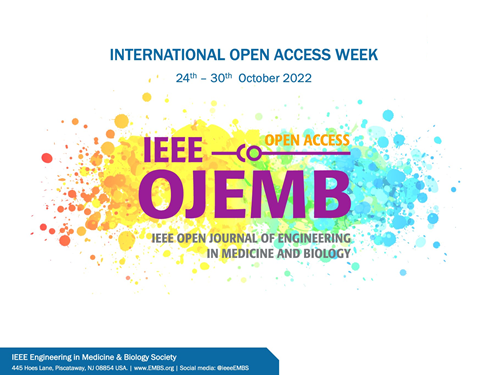Microbubble Contrast Agents Improve Detection of Active Hemorrhage
IF 2.9
Q3 ENGINEERING, BIOMEDICAL
IEEE Open Journal of Engineering in Medicine and Biology
Pub Date : 2024-06-18
DOI:10.1109/OJEMB.2024.3414974
引用次数: 0
Abstract
Assessment of trauma-induced hemorrhage with ultrasound is particularly challenging outside of the clinic, where its detection is crucial. The current clinical standard for hematoma detection – the focused assessment with sonography of trauma (FAST) exam – does not aim to detect ongoing blood loss, and thus is unable to detect injuries of increasing severity. To enhance detection of active bleeding, we propose the use of ultrasound contrast agents (UCAs), together with a novel flow phantom and contrast-sensitive processing techniques, to facilitate efficient, practical characterization of internal bleeding. Within a the custom phantom, UCAs and processing techniques enabled a significant enhancement of the hemorrhage visualization (mean increase in generalized contrast-to-noise ratio of 17%) compared to the contrast-free case over a range of flow rates up to 40 ml/min. Moreover, we have shown that the use of UCAs improves the probability of detection: the area under the receiver operating characteristic curve for a flow rate of 40 ml/min was 0.99, compared to 0.72 without contrast. We also demonstrate how additional processing of the spatial and temporal information further localizes the bleeding site. UCAs also enhanced Doppler signals over the non-contrast case. These results show that specialized nonlinear processing (NLP) pipelines together with UCAs may offer an efficient means to improve substantially the detection of slower hemorrhages and increase survival rates for trauma-induced injury in pre-hospital settings.微气泡造影剂能更好地检测活动性出血
用超声波评估创伤引起的出血在临床外尤其具有挑战性,因为在临床外,检测出血至关重要。目前血肿检测的临床标准--创伤超声聚焦评估(FAST)检查--并不以检测正在进行的失血为目的,因此无法检测严重程度不断增加的损伤。为了加强对活动性出血的检测,我们建议使用超声造影剂(UCA)、新型流动模型和造影剂敏感处理技术,以促进高效、实用的内出血特征描述。在定制的模型中,与无对比剂的情况相比,UCAs 和处理技术能在高达 40 毫升/分钟的流速范围内显著增强出血的可视性(广义对比度-噪声比平均增加 17%)。此外,我们还证明了 UCA 的使用提高了检测概率:流速为 40 毫升/分钟时的接收者操作特征曲线下面积为 0.99,而无对比剂时为 0.72。我们还展示了对空间和时间信息的额外处理如何进一步定位出血部位。与无对比度的情况相比,UCA 还增强了多普勒信号。这些结果表明,专门的非线性处理(NLP)管道与 UCA 相结合,可以提供一种有效的方法,大幅提高对较缓慢出血的检测,并提高院前环境中创伤所致损伤的存活率。
本文章由计算机程序翻译,如有差异,请以英文原文为准。
求助全文
约1分钟内获得全文
求助全文
来源期刊

IEEE Open Journal of Engineering in Medicine and Biology
ENGINEERING, BIOMEDICAL-
CiteScore
9.50
自引率
3.40%
发文量
20
审稿时长
10 weeks
期刊介绍:
The IEEE Open Journal of Engineering in Medicine and Biology (IEEE OJEMB) is dedicated to serving the community of innovators in medicine, technology, and the sciences, with the core goal of advancing the highest-quality interdisciplinary research between these disciplines. The journal firmly believes that the future of medicine depends on close collaboration between biology and technology, and that fostering interaction between these fields is an important way to advance key discoveries that can improve clinical care.IEEE OJEMB is a gold open access journal in which the authors retain the copyright to their papers and readers have free access to the full text and PDFs on the IEEE Xplore® Digital Library. However, authors are required to pay an article processing fee at the time their paper is accepted for publication, using to cover the cost of publication.
 求助内容:
求助内容: 应助结果提醒方式:
应助结果提醒方式:


